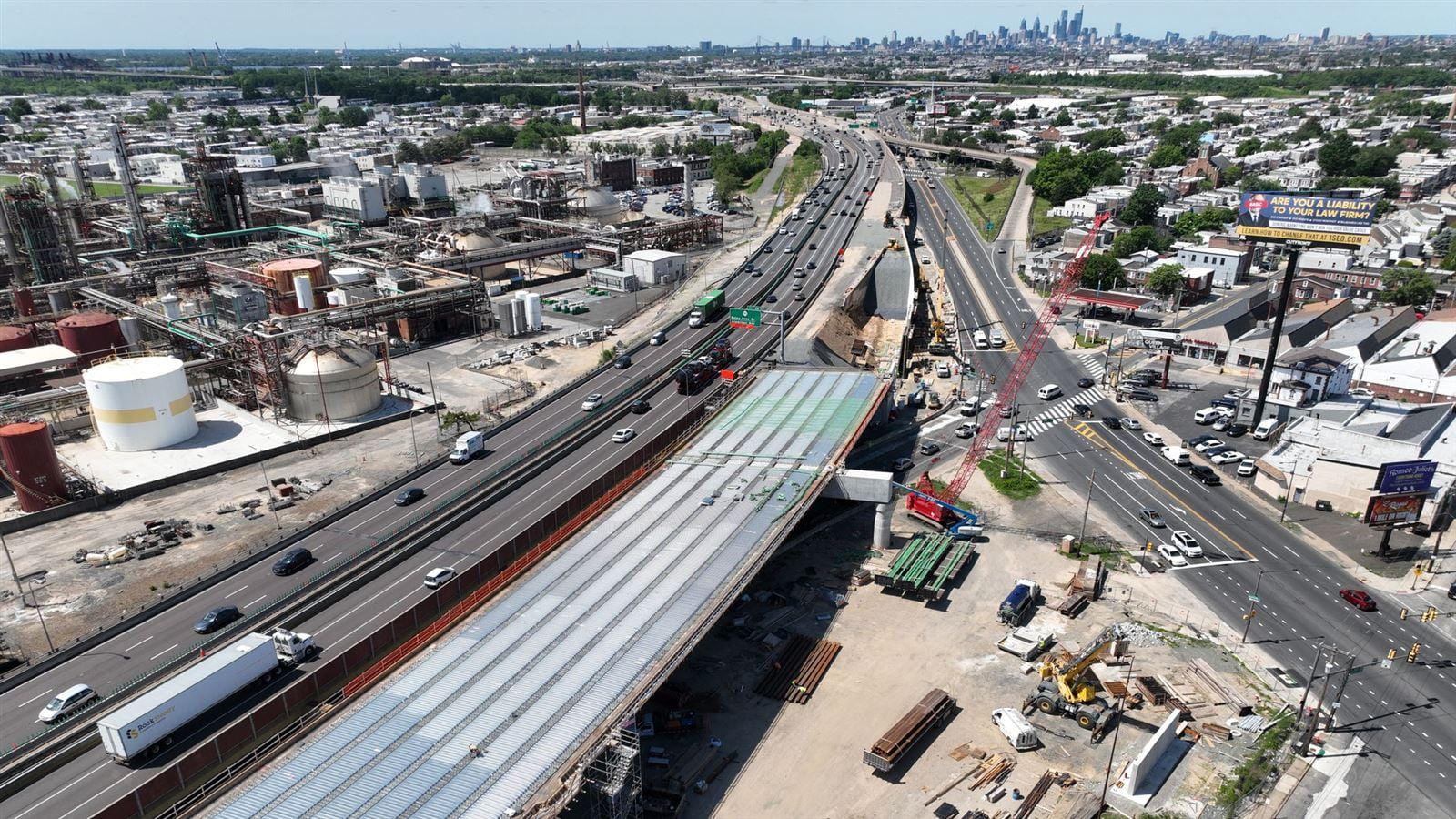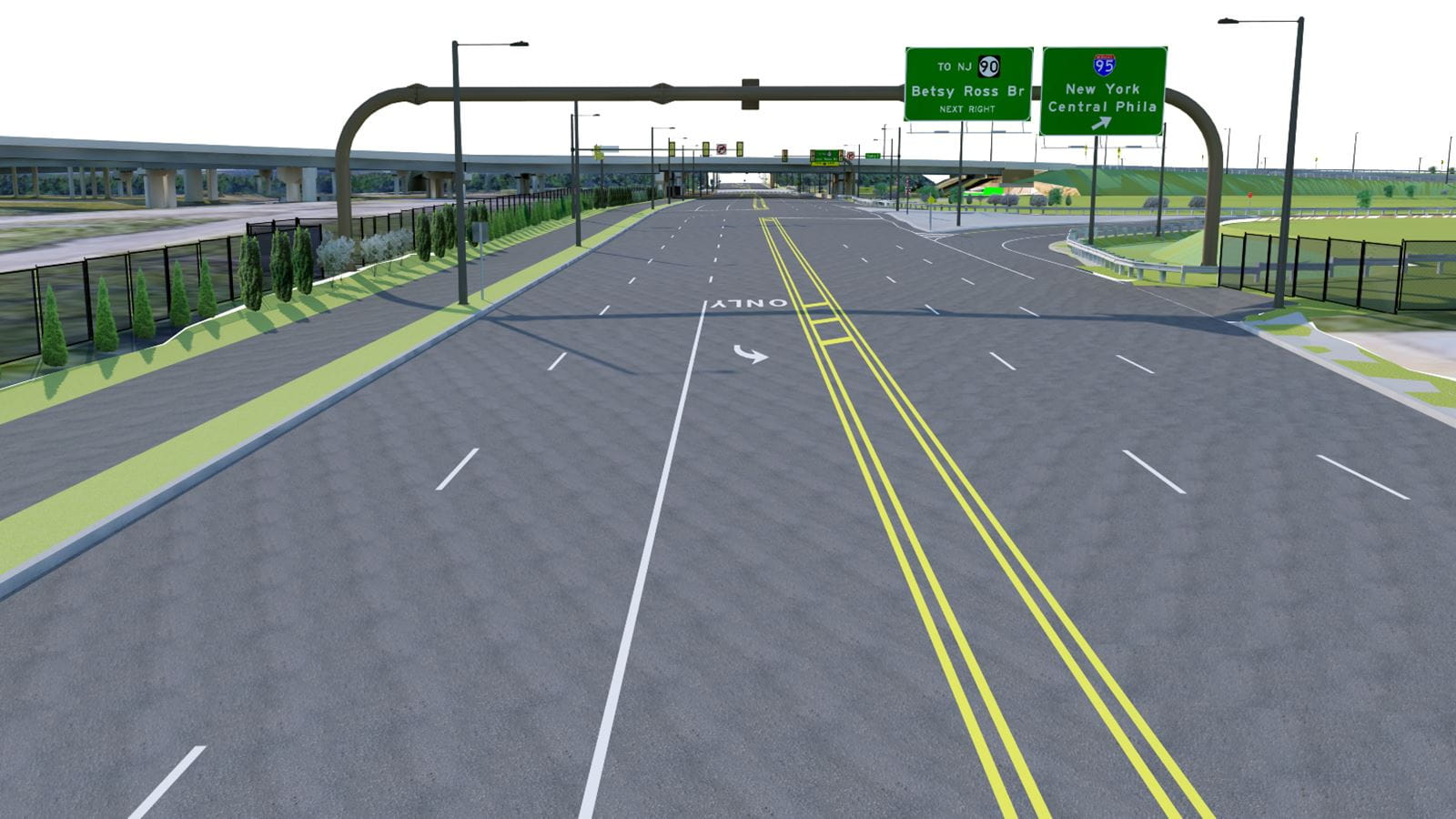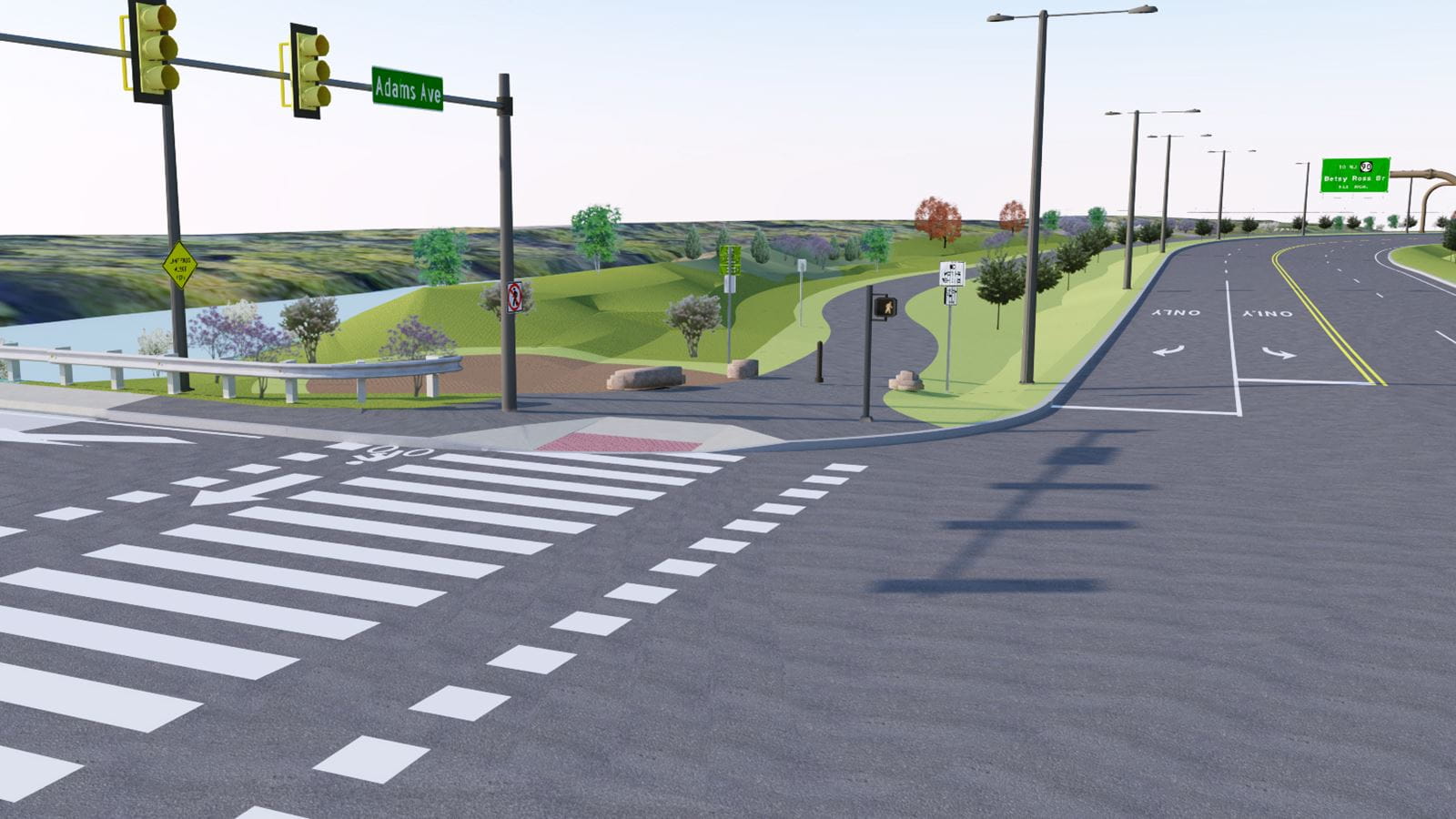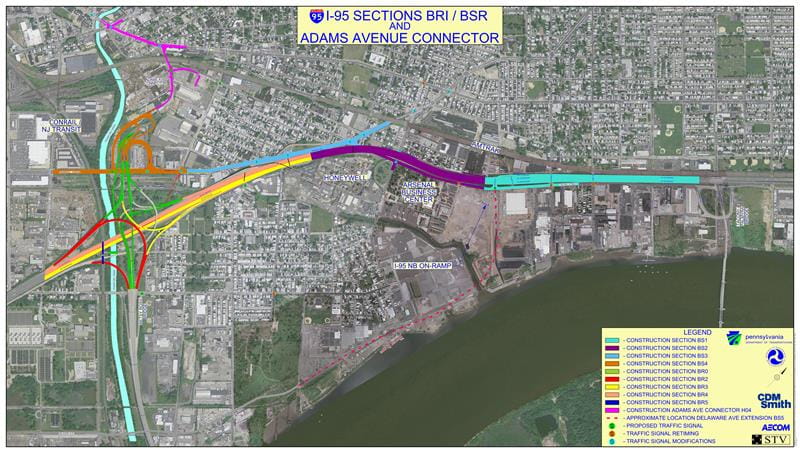Designing Access Improvements on I-95 in Philadelphia
Running parallel to the Delaware River along Philadelphia’s eastern border, Interstate 95 (I-95) is an important thoroughfare for commuters, freight traffic and visitors to the city. It provides north-south access for 158,000 daily vehicles traveling to and from the city’s northeastern neighborhoods and suburbs, Center City, the South Philadelphia Sports Complex and Philadelphia International Airport, and it connects Philadelphia to New Jersey via multiple bridge crossings. For more than a decade, the Pennsylvania Department of Transportation’s (PennDOT) District 6 has been leading a long-term, multi-phase initiative called I-95 Revive to improve and rebuild the interstate, its ramps, interchanges and bridges.
The Section BSR project entails widening that 2-mile stretch from three to four lanes in each direction to add capacity, alleviate traffic and improve mobility and safety. It also involves rebuilding all the bridges on this segment. In addition, one of the directives from the Federal Highway Administration was to consolidate partial interchanges and ramps into full interchanges and to prevent interstate traffic from out-letting onto local streets and communities. CDM Smith, therefore, performed a comprehensive study of the area along with PennDOT and city officials, resulting in a recent addition that extends a city street 1.5 miles to the new interchange to improve access to I-95 and to help divert truck traffic around the local communities rather than through them.
CDM Smith has been involved on Section BSR since its most early phases, when we completed a point of access study of the combined Bridge Street interchange and the Betsy Ross Bridge segments. CDM Smith’s team has since completed preliminary engineering and is currently working on the section’s final design. The existing highway has been in place for 50 years, and it is likely that the reconstruction will be in place for at least that long, so it is critical that we get the design right. A carefully composed design will not only have a positive effect on regional mobility but also local safety and quality of life.
Unlike a typical highway or bridge project, Section BSR incorporates a number of additional design components, including multi-use trails, pedestrian lighting, parking areas, “green streets” facilities and stormwater management. Additionally, the section’s new design will re-align or relocate many local streets to ensure efficient connectivity to the improved interstate interchanges. To get the design right, the CDM Smith team has been actively involved in the community, gathering feedback and support from local stakeholders. The firm’s outreach activities have ranged from small meetings with residential and business organizations in each affected neighborhood to large town-hall style public meetings. The input gathered from these interactions is incorporated into the project continuously throughout our design process.
The final design of the section includes reconstruction of seven mainline dual structures, including a 1,000-foot fracture-critical curved steel viaduct and a 345-foot curved ramp structure. These structures will include a combination of post-tensioned concrete pier caps and redundant steel cross-girder systems that will straddle city roadways and major utilities. Another important aspect of the section’s final design is eliminating existing lane drops at the Bridge Street interchange to solve a major traffic problem that has plagued the area for years. The reconfiguration of interchange ramps, as well as the upgrading of drainage structures, lighting, signage and retaining walls, is another important piece of the section’s revival, which is forecasted for completion in 2022.

"To get the design right, our team has been actively involved in the community, gathering feedback and support from local stakeholders."












